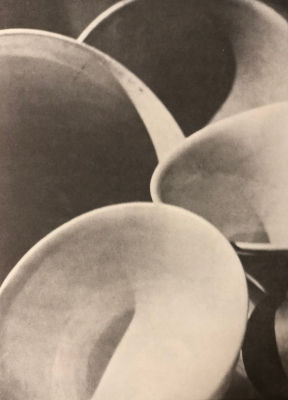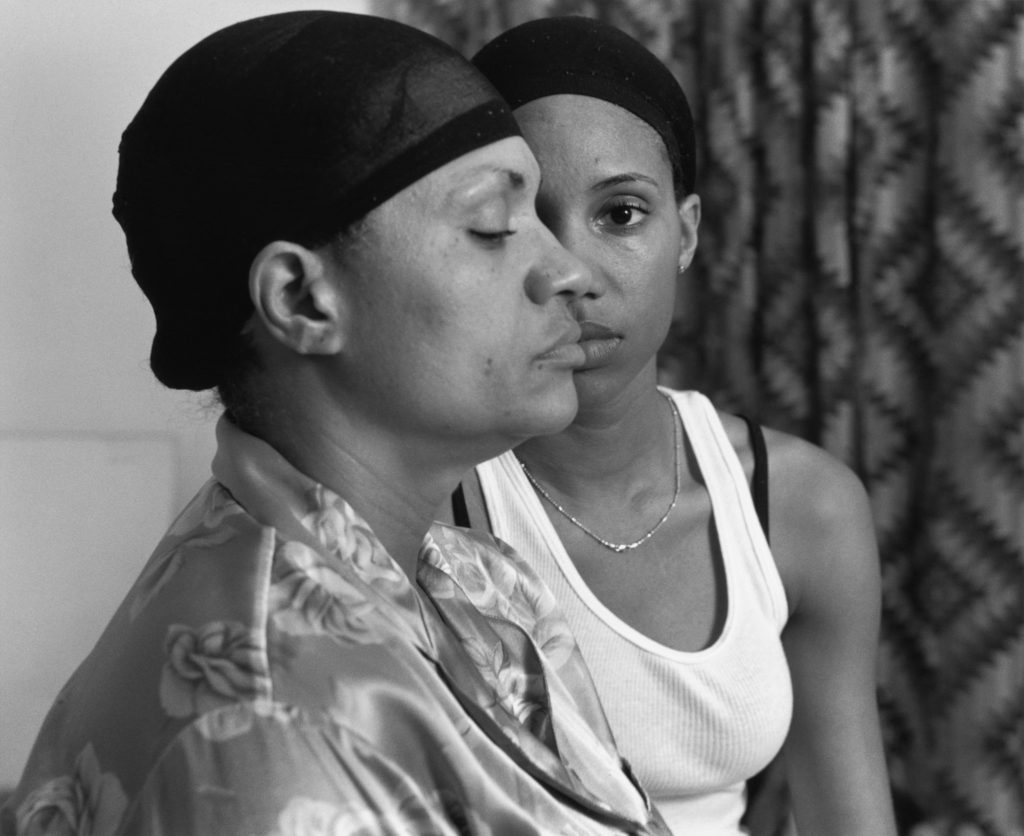To what extent can we trust documentary photography to tell the truth about reality?
“The process of manipulation starts as soon as we frame a person, a landscape, an object, or a scene with our cameras: we choose a portrait or landscape format” (Bright, S. and Van Erp, H. 2019; 18)
My personal investigation looks at my grandparent’s lifestyle and how it has been influenced by the time period they grew up in, the 1940’s. I have explored the influence of religion and spirituality, gender roles within the family structure and social norms during this time period which are still present in their lifestyle to this day. Holding strong connections with my grandparents led me to want to base my project on them, as I know I will be able to easily retrieve useful insight into their lifestyle, enhancing the imagery I produce, on top of forming a piece of work in which my family will cherish. In this essay I aim to discuss the extent to which documentary photography accurately portrays reality, with reference to two documentary style photographers, Latoya Ruby Frazier and Walker Evans. In this essay I will be referring to Walker Evan’s photographic series entitled ‘Let Us Now Praise Famous Men’ (capital letters on title) and Latoya Ruby Frazier’s photographic series ‘The Notion of Family’. Analysing photographers who captured imagery in two different periods of time, contextual and contemporary comparison, allows me to illustrate whether the reliability has changed overtime or stayed consistent, providing a valid argument.
The art movement of realism and straight photography looks at creating imagery which showcase life how it is, this emerged in the 1840’s. Artists who work within this area look at raising social and cultural issues relevant within society at that time, in order to make the audience aware of this issue in hoping something can be done to make a change. This area looks at documentary photography and photojournalism to document the events which are occurring. Artists stick to the original techniques and purpose of photography, the use of photography for science, to create detailed, sharp images showcasing real life. Henry Fox Talbot created the calotype, which is said to be the basis for how photography is practised today in documenting everyday life. The calotype was done by creating a paper negative, exposing a sheet of paper coated with silver and chloride to a light source. His photographs used a short exposure time and allowed multiple prints to be produced through one negative. He believed that photographs were the cause of light, the influence of nature, on a paper negative and is illustrated through optical and chemical means. Artist Louis-Jacques Mandé Daguerre, also shared this ideology behind image making and stated that photography “consists in the spontaneous reproduction of the images of nature received in the camera obscura, not with their colors, but with very fine gradation of tones.” (Daguerre Mandé 1838: page no – if known?). This illustrates how this art movement allows nature to present itself showing the reliability of imagery, which is then contradicted as it states its a spontaneous reproduction suggesting the accuracy of the imagery is reduced. Artist Frederick Henry Evans’ ‘A sea of a step’ clearly presents realism through the composition and use of the formal elements of light and space. Conceptually, the imagery portrays the climbing up the stairs, as if the stairs lead towards a euphoric feeling. “He drew on the Symbolist manner of using objects to directly express esoteric ideas.” (The Art Story – need help referencing this please – okay, where did you get this quote from?). This use of symbolism creates a subjective perspective reducing the reliability of this art movement. Paul Strand took a different approach to capturing objects, using a macro technique with clear focus on light and shadow and the contrast between the two in order for the work to “be brutally direct; devoid of all flim-flam; devoid of trickery and of any ‘ism’; devoid of any attempt to mystify an ignorant public, including the photographers themselves.” (need help again referencing). This suggests how Strand’s work produces a more objective narrative which clearly depicts reality illustrating how this art movement can be truthful. Looking closely towards documentary photography, a style of photography which places into this art movement, artist Walker Evan’s and Latoya Ruby Frazier use portraiture to showcase the lifestyle of the subjects presented in the frame in their natural environment, somewhere familiar to them that they have a relationship with, but to what extent does these photographers accurately portray the subjects lifestyle? With my topic being based in my grandparent’s lifestyle, I felt that using a documentary approach to photography would be the most appropriate to showcase this, as well as the project looking at social issues of family structure and gender roles being raised, thus drawing connections with realism and straight photography.
Comments: This paragraph provide a good historical overview of the origins of photography and its relationship with reality. You need to comment on photography inherent inability to represent truth as the act of photography is always subjective and artifice ie. the person behind the camera decided where to point the camera. And, the photograph itself is only ever a representation of a reality. I will try and think of a relevant essay fro you to read that questions photography and veracity seen from a postmodern perspective – I will email or send an online link via comments on the blog.



Walker Evans – 1936 – Allie Mae Burroughs
Walker Evan’s ‘Let Us Now Praise Famous Men’ photographic series explores the exploitation of Tenant farmers in Alabama during the Great Depression, through the medium of documentary portraits. With close analysis to the ‘Allie Mae Burroughs’ produced in 1936, the portrayal of the narrative clearly illustrates the dire conditions to which these families are subjected to, and draws upon the ideology that they do not know life any differently to the life they live now. “The essence is done very quietly with a flash of the mind, and with a machine. I think too that photography is editing, editing after the taking. After knowing what to take, you have to do the editing.” (Evans 1971 : page no – if known?) – Evans suggest that although his photographs are trying to capture reality, manipulation of capturing or editing still effects the photographs and the way in which it truthfully presents the Tenant’s pejorative lifestyles. In an article, published by the Guardian, the author describes Evan’s imagery to accurately present reality, “You can’t sniff the stink of the quilts in the Evans pictures, nor itch with the lice in the pillows. The foul beds take on a Shaker dignity of form. A gasoline pump on the porch of a post office metamorphoses into sculptural permanence within the fixed focal length of Evans’s lens.” (author ?? 2001 : page no – if known? ). His positive critique to Evans’ imagery emphasises how accurately he managed to capture the raw living environments of the tenant families, which allows viewers to sympathises for these families, as we understand that they do not know life any differently, which contradicts the viewpoint of Evan, but who are we to believe more? Simplicity in the composition allows an accurate reliable source to be illustrated. Evan’s subject is placed in the centre of the frame, and using naturalistic lighting he captures the subject gawking into the lens as if they are asking for mercy. He captures the subject in their naturalistic environment allowing the authenticity of his imagery to be upheld, and allows reinforcement for the sympathetic connection to be between the subject and viewers. Technically, he uses a large depth of field, due to the whole frame being in focus, suggesting a small aperture and slower shutter speed. It is recorded that Evan has four different variations of his ‘Allie Mae Burroughs’ which reduces the reliability of his work, due to manipulation of his subject in each image, which can lead to us not fully conforming to believe in this social implication, as it not being a reliable source due to several versions of the same image, with only one outcome being used. In my response, I captured my Grandparents outside of their homes, in locations where they spent the most time when outside, or the areas in which they felt illustrated their lifestyle. Similarly, using a small aperture and slow shutter speed, I used a tripod in order to produce detailed and well structured portraits. The natural light source from outside and naturalistic environment, allowed me to maintain the authenticity of my imagery allowing for a reliable source presenting my Grandparents lifestyle. In terms of concept, I captured my photographs mainly outside using simplistic backgrounds illustrating their lifestyle, but I also decided to explore this connection of subject and location with the interior of my Grandparents house, as they spend more time inside than out.


Bibliography:
Bright, S. and Van Erp, H.(2019), Photography Decoded. London: octopus Publishing House
Louis-Jacques Mandé Daguerre.(1838), Louis-Jacques-Mandé Daguerre. photoquotations: http://photoquotations.com/a/171/Louis-Jacques-Mandé+Daguerre
Rule, V. (2001). Review: Let Us Now Praise Famous Men by James Agee and Walker Evans. [online] the Guardian. Available at: https://www.theguardian.com/books/2001/aug/18/historybooks.highereducation [Accessed 15 Jan. 2020].
https://www.theartstory.org/movement/straight-photography/
https://www.photoquotes.com/ShowQuotes.aspx?id=196&name=Evans,Walker

see my comments in italic . Overall it reads very nicely and the structure of the essay is good too. I need to find you an essay to read about photography fraught relationship with reality. I’ll put it here as an online link later.
Keep up the good work!